Memories in Structures
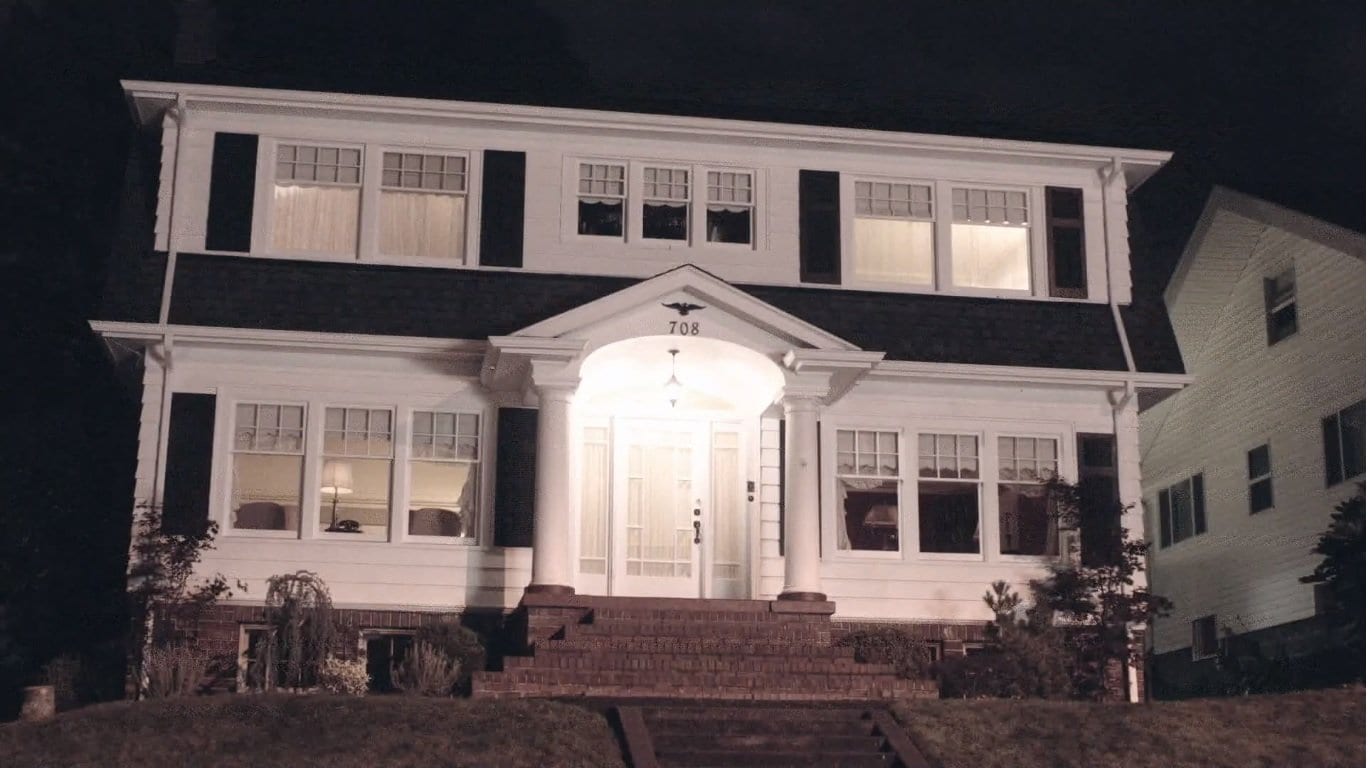
In our world, most of the ghosts you hear about reside in haunted houses. The walls remember things and their absorbed memories replay like scenes in a film. Memories are thoughts that hold power (and in David Lynch’s work are power) and seem to attach to physical states. Buildings absorb the strongest or most repeated motions within it. Haunted houses will play the memory of footsteps walking down the hallway then going up non-existent stairs every night around 11:30pm. The house will replay cold drafts when a window is used to opening, whether it is open or not. And sometimes the house even remembers people themselves, such as the Bookhouse in St Louis. Its original location remembered the spirit of a little girl, who would sometimes help people find specific books they were looking for, but it also remembered a mean elderly man who would make the book store’s patrons feel severely unwelcome. You knew his presence was there when you could feel the negative energy and smell the pipe smoke. Building walls remember things. Even the ground can remember buildings, if The Final Dossier is correct about the Dutchman’s origin as a real hotel burned down by arson in the late 1960s.
Memories in Bodies
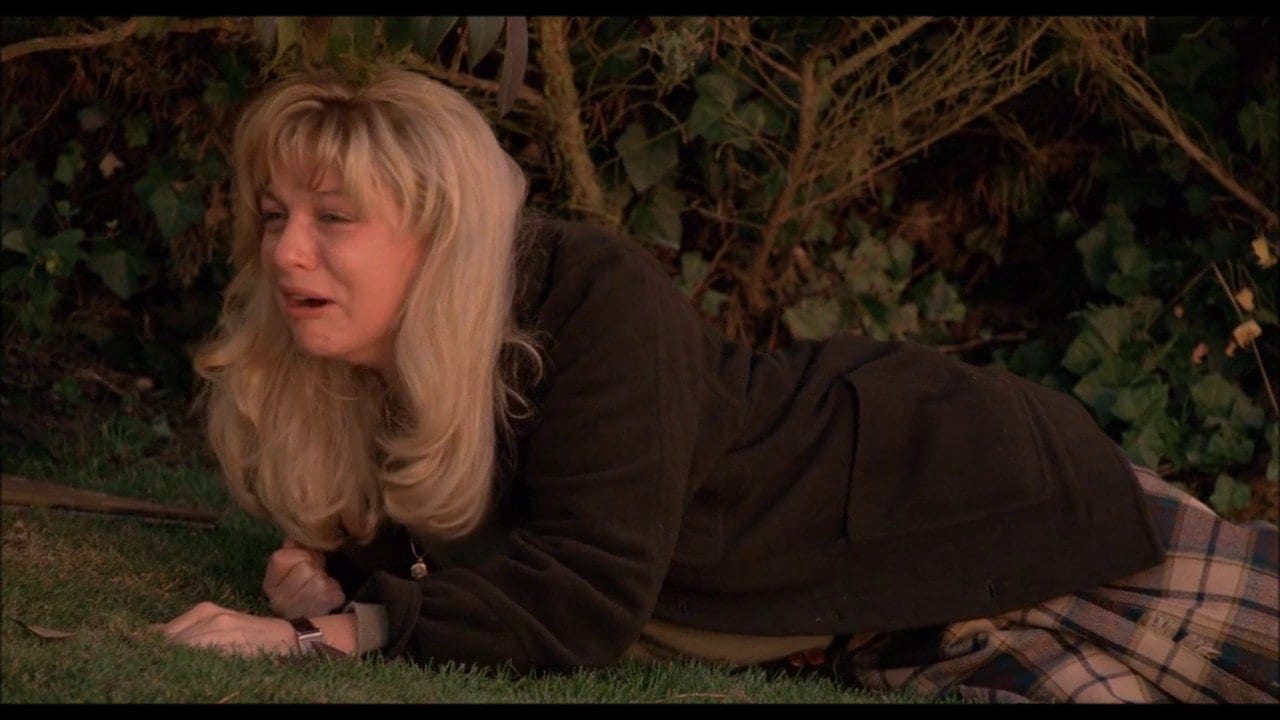
Bodies remember things. Muscle memory is a survival necessity. The body remembers what it needs to so that it is prepared to the best of its ability not to die. If you’re in a body, you’ll remember what the body remembers.
Memories in our own heads work the same way as they do in haunted houses, though expressed internally. After you have an argument with someone, tell me you don’t replay it in your head based on what you wished you’d said. Tell me you don’t imagine how you would’ve changed things for the better if only you’d just said this. Right after you do something massively embarrassing, go on a job interview, or ask someone out on a date, tell me you wouldn’t loop the interaction in your mind with all the possible things you could have made better or worse? Or if things went well, try to tell me you don’t relive that in your head over and over in triumph? These memories rework themselves in your head as you play out what-ifs. These thoughts are cyclical, beginning over and over from the same point in a very Groundhog Day way. These replayed events are memories that are as important to you as the events themselves, because they are all that’s left to you that your experience existed. There is nothing supernatural about second guessing yourself or celebrating victorious moments. They’ve left an impression on you.
As human beings, we relive our most impressionable moments in order to learn from them. Sometimes events are so bad (say being held up by a person with a gun, or taking shelter from a tornado) that events replay over and over in your mind because you want to discover how you survived it in case it happens again. And in terms of events so terrible, such as what soldiers like Mickey’s friend Linda lived through, you may ask yourself why you survived. Sometimes sights and sounds can trigger memories so strongly, in terms of PTSD, that you feel like you’re there again. In every way but physically, you are there again. These memories are just as much ghosts that can haunt the world as the ghosts that haunt houses. Trauma is serious, and real.
Memories in Dreams
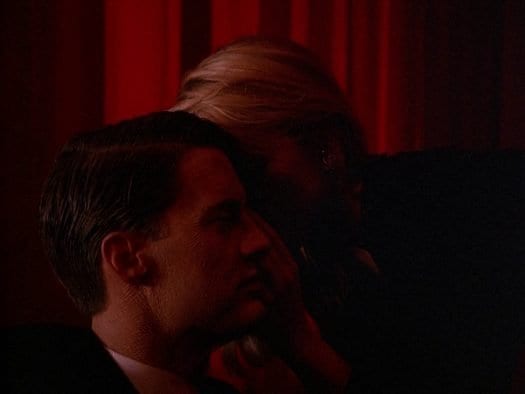
Dreams are an interesting state because we don’t typically remember much from dreams. We have trouble it seems because our soul is not the part of us that remembers. Our bodies retain the memories because the memories are tied directly into survival instinct. Meanwhile, the soul is in a perpetual state of Be. Memories in dreams are usually left in the dream.
If you’re in an astral state, which per Theosophy says can happen through meditation but most normal folks only achieve when asleep, you leave your physical presence for a higher astral plane, and this is the state of dreaming. When in a dream, a soul can plant the memories of its experience inside the structure of the dream (think of its physicality being more like a cloud than the images you’re dreaming about) but it’s hard to remember moments from that state when you’re awake. Hence Gordon Cole needing a Monica Bellucci Dream to come to him before he could remember the Jeffries moment in Philadelphia. Cole needed a cue-dependent dream memory to bring him back to the original memory.
Being essentially made from an electrical dream state, Lodges don’t absorb the memories of the soul’s experience. If you have an experience in a dream, you can only remember all the details when something jogs your memory and brings you back to the moment you’re specifically trying to pinpoint, say when Cooper couldn’t remember what Laura whispers to him until the elderly room service waiter mentions the gum in the Roadhouse and Leland takes the bait and reminded Dale into the answer that is suddenly within his reach. Interacting with Lodges leaves memories in the Lodge and removes them from being remembered in your body. The memory has been absorbed in the place rather than yourself. And the sequence of Lodge events are sometimes born into something new. The memory perhaps isn’t yours to have, or maybe it’s all cue dependency and you can only recall a memory when you’re surrounded by like memories.
When you’re in a dream in Twin Peaks, it appears you are tapped into a flowing stream of energy, which I’ll call electricity because of the prevalent imagery throughout the season, and not to mention the bullhorns of similarities between Season 3 and Lynch’s unproduced Ronnie Rocket screenplay. In the screenplay, a detective is trying to enter a second dimension, which is essentially akin to Lodge-space as far as I can gather, and Ronnie Rocket is a three-foot tall man who has control over electricity. It’s not one-for-one with Season Three mythology, but there is enough prototypical concepts to this season as there is from Blue Velvet into Season 1. And there is one particular moment that you know must mean something in that screenplay, but in Season 3 becomes a major clue: the bad guys have to kill Ronnie inside the city because otherwise he might come back as a memory. In the physical city, he’ll die in his body and people will remember him in their hearts. But if he dies a traumatic death in the second dimension, becoming a memory means something much more.
The strongest events, like Ronnie Rocket implies, appear to manifest in Lodge-space into a physicality of their own not unlike ghosts. They form into things like tulpas. And if you die, and are sent to the Lodge, you almost assuredly become a memory.
Tulpa: Personified Trauma

In the Season 3 Blu Ray bonus material, Lodge Laura is introduced as Carrie Page. If it’s not Laura herself as we’d all previously assumed, what does that mean? She’s a tulpa, like Diane. The removable face was a tip off. Another interesting clue about Carrie: “I am dead, yet I live.” This tells me she is a traumatic memory with literally a life all her own. I believe the memory of Laura’s trauma from her abuse and death was delivered into the Lodge upon her death by way of the Owl Cave ring, and it grew bodily into Carrie Page.
Laura Palmer died in Fire Walk With Me after putting on the Owl Cave Ring, and appears to have entered the Lodge directly because of that. We know from Ray Monroe that (an astral form of some kind shaped like the wearer that I’m calling) a soul appears in the Lodge while the body remains on Earth. Whether it’s Ray’s soul we saw or another trauma tulpa is up for grabs, but I’ll say it’s his soul based on Laura’s angel appearing in Fire Walk With Me.
When Laura died in the Lodge, she was rescued by an angel. End of her story, right? Well how did she stay in the Lodge? Carrie Page was created and left behind when Laura ascended with the angel. Laura’s trauma was so strong and so attached to the world it was pulled away from Laura when she went to a higher plane. But because Laura’s trauma was so strong it became an entity all its own, and later on I will propose Carrie needs to shovel out of the sh*t in order to allow all of Laura to move on. But that’s later.
Right now, I’m going to suggest another tulpa was created in similar way: Diane Evans. We know for 100 percent the early Season 3 Diane was a tulpa that maintained Diane’s memories. I think she met her end when DoppelCooper and BOB raped her. When she was brought to the Convenience Store, I believe she was killed, just as Laura was killed upon her entrance to the Lodge. Diane’s trauma over the betrayal became the Diane we first met in Season 3. And she fully realized her trauma right before she was pulled back into the Lodge and she recognized she was a tulpa. Behind her face was darkness rather than the electricity within Carrie, but there’s reason for that which I’ll get back to later. Right now I have another trauma-based tulpa to try to explain.
Sarah Palmer is also a tulpa as far as we can understand. She removes her face and is hollow inside. Of all people, she easily has the trauma necessary to become a tulpa. When haunted by as much PTSD as she was, it’s easy to understand how she could have died inside, leaving room for any old spirit inside her to move in like her body was an abandoned ghost town (and ghost towns are a thing: In Secret History of Twin Peaks, Mark Frost specifically spoke about Hanford, Washington making ghost towns of its surounding towns, and in a Reddit AMA he mentioned how the three-year-old ghost towns in Las Vegas where CooperDougie appeared was something he wanted to include in Season 3, so ghost towns are baked in to the Season 3 script regardless of Lynch’s interest in carrying out the metaphor). In a previous article I explained Sarah’s mindset as I tried to humanize her situation. When Sarah Palmer gave up the fight and was swallowed by the darkness around her, it made it easy for her trauma become a living ghost, a zombie even, and it made it easy for the Frog-bug inside her to assert control.
Except Sarah is physically on Earth so how can these Lodge-style metaphors happen literally?
The Weakened Barrier Between Two Worlds
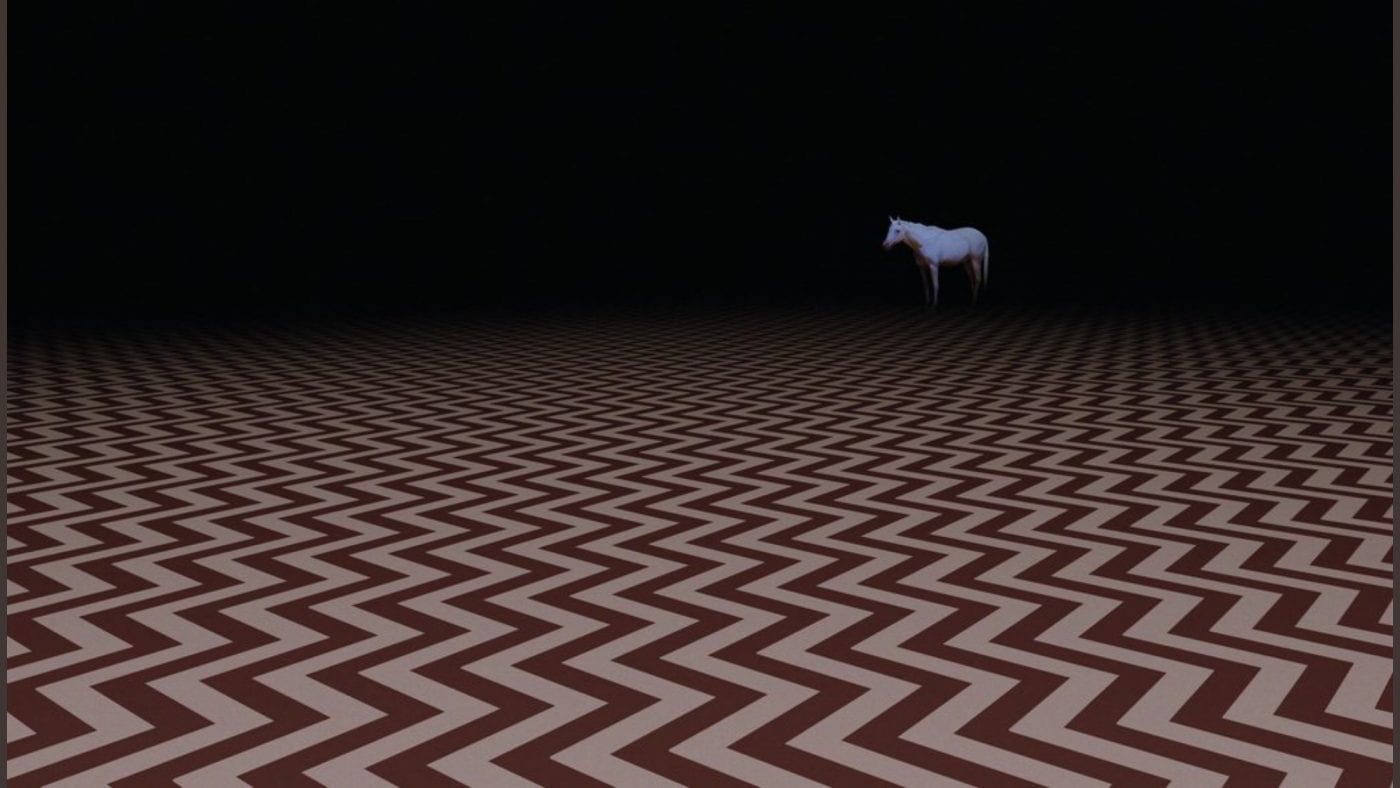
In Twin Peaks Season 3, we see signs in the physical world both of dreamlike forgetfulness and inability to remember, and also physical manifestation of mental loops, and tulpas living among us.
In a previous article I credited this to my timequake theory mechanics, where interactions between Lodge and reality scrape across each other and send shock-waves through time and reality like earthquake aftershocks, and further extrapolated how some shock-waves can shake the proverbial tectonic plates so much that the realities slip across each other and form metaphorical mountains of reality that contains both Lodge and physical realities at once. In this column I’m crediting these kind of layered reality “mountains” to any territory surrounding portals. Because the barriers between our dimension and the second dimension has become weak ever since humans blew an irreversible hole in the barrier with the atomic bomb and Experiment sent Frog-bug eggs through the hole.
And because of this melding of astral and physical states, memory itself isn’t what it used to be.
We get clues of this in Season 3 with all the meta names and moments. Mary Reber playing the current owner of the Palmer house and we all know she’s actually the owner. Eddie Vedder playing a musician that is his given birth name rather than his stage name. Catherine Coulson dying and the Log Lady doing the same, as well as both Margaret and Catherine getting an “in remembrance of” in the episode credits. All of these things make us feel the mingling of two completely different kinds of realities smashed together seamlessly and awkwardly in difficult-to-define ways. It instinctively makes us recognize the blend as well as makes us try to understand what is off. But it’s not one reality or the other. It’s both. They commingle. They influence the other. And the scenes we see show the stress this relationship is causing.
In a translation between reality states, Lodge entities speak backwards while physically-based characters (say, Cooper) speak forwards. In Season 3, we see backwards blinking and repeated motions such as the Las Vegas FBI Regional Bureau Chief hitting his desk not just once but multiple times. On a different tack, we also hear an evocative hum in the Great Northern (and the Jones home and hospital in Vegas) where there are soft spots between realities that Gerard can push through.
Experience on Earth, when within range of portals, becomes as malleable as reality within dreams. The experience of the observer becomes as much a part of reality as what physical reality dictates.
When Sarah Palmer emotionally died inside, she literally died, and because her house has a portal in a ceiling fan as well as a portal in a painting to the Dutchman’s hallway, her house is an in-between liminal space. Her emotional death in this place allowed her body to die, and yet live on as a tulpa. And because she’s still alive, her Frog-bug was allowed to live on inside it same as ever, except with the added ability to mature within it.

In a similar vein to Sarah’s trauma, the people in Twin Peaks who are overwhelmed by grief don’t do so well. In particular, I’m thinking about the horn-honking woman with the zombie child in the passenger seat. Not only does her “aaaaaaaah!” loop over and over cyclically, the worst case scenario representation of the woman’s (possibly dead) child is riding next to her. This is a form of PTSD presented to us to show that the effects of Lodge influence is happening to everyone within the limits of the portals and the nested realities. The screaming woman’s memories and fears are brought literally to life.
To a lesser degree, we see loops of belief as Lucy lives in the past by understanding only old technology (except when she’s shopping on the Internet which is motivated by love for Andy rather than fear of the unknown), and Big Ed and Norma staying in their holding patterns as Ed paternally holds himself responsible for Nadine’s safety and Norma puts her growth into her business rather than herself.
In the immediate vicinity of portals, time itself skips. It’s like the multiple law enforcement officers at Jack Rabbit’s Palace and the Woodsmen outside the Convenience Store in Part 8. Time stutters back and forth and outright skips at random intervals like a needle at the end of a record. This is the exact same thing that happens just inside the portal too in Part 3 in the room with American Girl. Points of nexus behave as if unstable, which I believe they are.
At the crux of a nexus point is Audrey Horne. She’s literally caught between worlds more than anyone else because DoppelCooper did not bring her to the Lodge to put her in a Lodge-adjacent space. She was already there, in a coma when DoppelCooper and BOB raped her in the hospital. She never let her trauma turn her into a tulpa because she remained herself (as Audrey always does), nor was she meant to be a tulpa before the last minute course-correct of Audrey’s character during Season 3’s filming. Audrey’s tulpa does not haunt a physical space, Audrey’s life bodily haunts Lodge-adjacent space. How do we know she’s caught between worlds? The exact dialogue between her and Charlie as she loops about needing to go to the Roadhouse. Then there’s her break from the Roadhouse when she gets there, where she dances to the song titled after her. Not only does she jump to another location as she mentally has a breakthrough, the music plays backwards from there. Her POV went strictly into the physical world and the Roadhouse began sounding like it’s from the Lodge playing backwards. Why is Audrey so attuned to this where it’s vague with everyone else? Because she’s also a portal: when she gave birth to Richard Horne, her own body became a Lodge portal.
With that exact logic in play, we can say for certain that this can also apply to Sarah Palmer. As a portal herself, this allows for Sarah Palmer to be a living Jumping Man or Owl Cave Ring (both symbols in their way of travel between worlds) and yet another reason why Sarah and her house are so particularly Lodge-like despite being part of the physical world.
And also we get a glimpse of what it looks like when you fight for yourself, as Audrey does, and when you give up, like Sarah.
Black Lodge from boom to bust
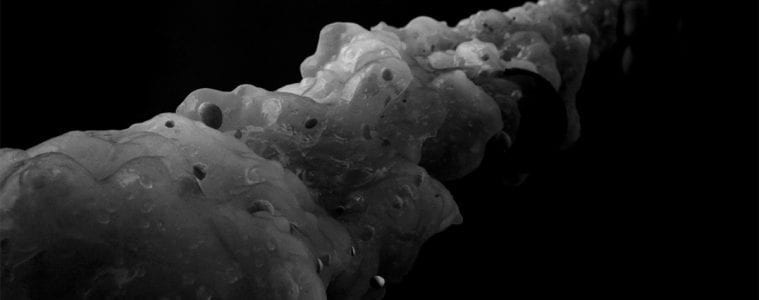
Based on Sarah and Audrey’s explicit connections to the Black Lodge, and the way negativity seems to have invaded the whole world, I can say with reasonable accuracy that the Black Lodge is the portion of the higher reality that is invading the physical world.
Its out-of-control appetite has dominated characters like Steven, who became addicted to Sparkle and acted spiritually-starved and hungry beyond his ability to handle it. And when he shot himself he apparently went missing rather than became a physical body as if that hunger consumed him outright. All the Roadhouse soap opera characters looked to drugs etc. to alter their reality because they couldn’t handle it either. Their pain and wanting rose to the surface, their appetite and impulses on full display to their own detriment.
It started with the bomb, and the Experiment’s eggs. The Experiment, if anything, is the Lodge personified, an experiment of physical shape. I will make a wide assumption here that it is what we mistake for Judy, but not being convinced this is exactly the case.
Judy, I think, is a red herring created or embellished on by Phillip Jeffries and the Fireman (and possibly Briggs) to be a distraction for DoppelCooper to focus on, but I’ll get back to that later.
The incursion of the Black Lodge into our reality came to a head with the death of Laura Palmer. In 1989, the Lodge had been expanding but was still satisfied by its appetite thanks to a theory I’m cribbing from EW’s A Twin Peaks Podcast where Jeff “Doc” Jensen and Darren Franich suppose BOB was a force going out into the world and gathering garmonbozia, which is essentially the sustenance the Lodge needs to survive. With BOB collecting the garmonbozia and sending it back (with the invoices he signs with little letters clipped from newspapers and posted under fingernails of the garmonbozia sources), the Lodge was a thriving economy of growth.
When Laura Palmer died the way she did, not only did BOB suffer a defeat that officially lands him in the doppleganager of a Special Agent that allows BOB to fly the Coop, the Lodge also suffered the garmonbozia vortex known as Laura Palmer’s trauma-tulpa Carrie Page.
Are the creation of tulpas a comparable infection in the Lodge? Is it a reverse evolution, one that needs to be ended by Cooper removing Laura from the timestream? I pose that the answer is yes.
No one wants to die, not even a Lodge
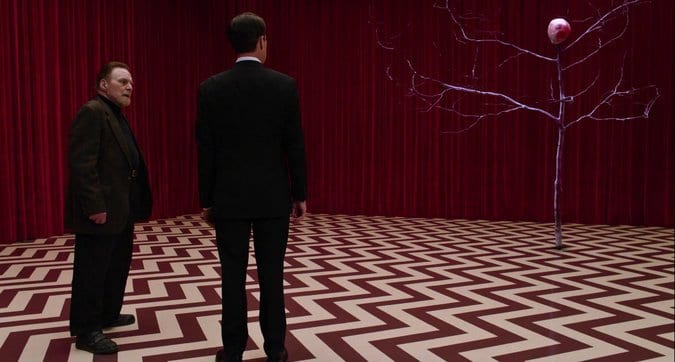
The Black Lodge doesn’t want to die, but between supply going down and consumption going up, that’s exactly what’s happening to the Black Lodge. In all honesty, I think it’s reverting to the norm after a period of immense growth brought on by the Frog-bug expansion of 1945, but the Lodge doesn’t see it that way because its own survival is at stake.
As a byproduct of BOB’s escape, the Lodge has a new house guest, and one who happens to have an immense desire to be helpful. The Lodge wants to capitalize on this in a big way. This is why Phillip Gerard is so intent on springing Cooper from the Lodge regardless of the legally binding deal BOB made with the mortal. Gerard’s entire survival is at stake and he’ll do whatever it takes to get Cooper ready to help them.
Based on the denizens’ interactions with BOB in Fire Walk With Me it seems that BOB made the 25-year-long deal with Cooper on the sly, and the denizens are more than interested in helping. They get Cooper out through a loophole. Because Cooper knows everything DoppelCooper does. They lean hard into the Find Judy plot to distract the DoppelCooper that gets just as white knight-like as Cooper does. They invent an “unofficial version” of Dale Cooper’s quest to find Judy so DoppelCooper can remember that instead of the real thing happening.
DoppelCooper, who also wants to extend his life beyond 25 years, puts traps all over to capture or kill Cooper. This part is the most straightforward: the glass box can capture Cooper and DoppleCooper can exile him to nonexistence from there. The electrical outlet is covered by a woman whose appetite for drugs has put her into a state where her only alarm call is “119” if any activity is detected. Hitmen are employed by Mr. Todd and Lorraine, and come in all shapes and sizes like Ike the Spike or Chantal and Hutch. DoppelCooper has all exits covered so that Dale will stay out of his way. Except there’s Judy to protect now. Framed the way it is, where even Gordon Cole has this on his priority list, DoppelCooper needs to make sure his “lady” is also under protection. And just as Cooper is blind in love (let’s look at Caroline and Annie’s fates for examples), DoppelCooper is similarly blinded with this Lodge-veiled reality. And in a way we get a new angle on “protect the queen.”
The Black Lodge tasks Phillip Gerard with getting Cooper through his doppelganger’s gamut. Gerard subliminally convinces Tracy (who works at the Lodge-connected coffee chain) to keep Sam occupied while Cooper slips through, and disposes of the teens with a model of the personified Lodge’s Experiment that will convince DoppelCooper of the Judy ruse.
Switching out Dougie with Dale was the next step and that went smoothly because the hitmen in cars were inept, and Jade was a good soul and therefore blessed with White Lodge style luck that got Dale out of there. Not to mention the fumbled keys.
Owls watched the Jones house at all times: we see one fly over the house in its first scene and there are always people commenting about birds, or shadows on the ground, even in the quick comedic scene where Sonny Jim and CooperDougie play “catch”.
Gerard gives a pie to CooperDougie as a trigger to go along with the dream he gave to Bradley Mitchum. Then there’s Gerard literally telling Cooper to wake up, and don’t die.
So the Black Lodge wants to bring BOB back into the fold as their garmonbozia gatherer. They also want the Laura Palmer problem fixed as if it were never there.

The Black Lodge denizens know Phillip Jeffries is unhinged from time. They make sure Dale Cooper is in a position to use Jeffries’ ability and take the Owl Cave symbol-embossed ring of time to travel backward through it as only a physical-reality-based human can do. They task Cooper to effect time so that Laura Palmer does not break the circle of appetite and satisfaction and make it go u-shaped, hemorrhaging garmonbozia over everything until the Lodge bleeds out. And because Cooper is an optimist who instinctively sees the good in people, he goes along with that plan. Partially, I suspect, because the Fireman compelled him to do so, but also because BOB is just one denizen. The other ones have been fair to Cooper. They even let him astral project to meet the Fireman. And who knows, maybe even the Lodge denizens have hearts of gold like the Mitchums and Cooper brings it out of them too. These denizens are beings that also have a right to exist.
Also, let’s not forget: Cooper has a horse in this race. The same agent that wanted to be the one to crack the Lindbergh case is the same agent who never satisfactorily solved the Laura Palmer case. And when given a chance to fix this, his worldly hubris says yes please.
As DoppelCooper willingly takes on Judy’s protection, our Cooper willingly takes this challenge on. He will save Laura Palmer.
And he’ll do it using time travel as Garland Briggs (the WWI pilot outfit in Season 2) and Phillip Jeffries (Buenos Ares and the missing years) before him.
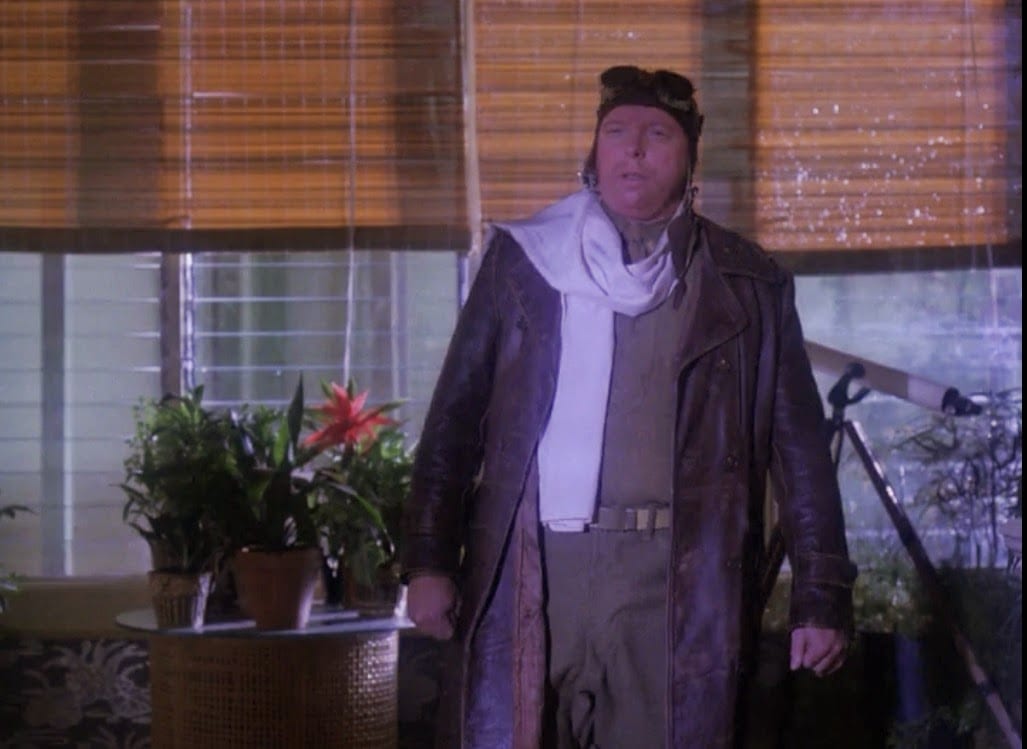
Thanks to the repeating scenes of Lodge Laura’s whisperings, I suspect that Cooper’s been through this life already at least once before, and he’s in a “New Game +” version of events so he’s got a leg up on folks as he gets even closer to ending his connection to BOB.
Cooper’s been doing this long enough, arranging himself a few steps further ahead each new time loop, that I suspect his own version of Lodge-related shocks to time all by himself look like rain drops on a sidewalk, and makes time just as slippery. Because he goes through time in the Owl Cave symbol, he’s on a different frequency than physical reality though because of the reality overlap it affects physical reality anyway. And we don’t see multiple timelines, we just see one, littered with Cooper iterations constantly redefining people’s memories as he cycles through.
Billy may be an in-story explanation of these constant changes: if you can keep track of when Billy does different things with the different Roadhouse characters, or how he may or may not be with Audrey after Part 12 you can see the ripples to the Lodge-adjacent memory of the town. He may be less a red herring and more a barometer of change, or at least a mile marker for us to instinctively understand how time ripples tend to go.
Our timeline, the one the audience sees, is a single string that is being regularly collided with and rewritten. Memory does what it does to people within the timeline but when you pull back far enough away, it’s a line that that has a lot of texture changes in the middle where it’s being hit by the proverbial rainstorm of Coopers.
It’s quite possible, with all these interactions, that Cooper is the one who’s charged the earthquake-sized shockwaves that erupt like a bomb when Laura Palmer defeats BOB, thus setting up the Black Lodge for its implosion.
Which would be a very Fireman thing to arrange.


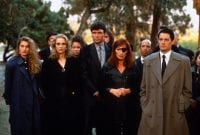

Amazing and well thought out analysis. The joy of The Return and all of TP is that there is so much room for speculation. One thing…I do believe that Audrey mentions Billy in episode 15 or 16 before she dances.
Thanks for the tip, I’m going to need to check on that one. I bet she does, just memory’s a tricky thing. Thanks!
You say the angel is in the painting of the Dutchman given to laura by the chalfants, but isn’t that a separate painting?
I’m under the impression the painting Laura is inside (the one hanging on her room’s wall thst she got from the chalfonts earlier) shows he in the same hallway/door that took Mr C to see Jeffries.
Really thoughtful, elaborate work here… thanks for all this good stuff to chew on!
I love the idea of Laura’s whisper being some new element, completely unwritten as of yet, instead of some crucial key to S3 itself.
“Cooper’s been doing this long enough, arranging himself a few steps further ahead each new time loop, that I suspect his own version of Lodge-related shocks to time all by himself look like rain drops on a sidewalk, and makes time just as slippery. Because he goes through time in the Owl Cave symbol, he’s on a different frequency than physical reality though because of the reality overlap it affects physical reality anyway. And we don’t see multiple timelines, we just see one, littered with Cooper iterations constantly redefining people’s memories as he cycles through.”
I think this is an incredibly rich train of thought that deftly puts to rest the “is-it-really-happening?” question that I myself have gotten trapped in. It might even provide a useful within-world explanation as to why *nobody* is alarmed by Dougie/Dale’s strange behavior. If his very presence is emitting a signal that warps reality, people’s expectations might be subtly adjusted as they interact with him!
This train of thought also opens up the possibility that memory itself is a weapon/battlefield that the Black Lodge and White Lodge seek to control. For example: Bradley Mitchum first recalls a dream where he and Rodney kill Dougie/Dale, then a few hours later the *same dream* is a sign that they should let him live!
Is there any direct contact between Las Vegas and the other parts of USA before Dougie/Dale wakes up? I can think of Jade’s key and Gordon’s phone calls to the FBI, but that’s about it. “Weird” people like Mr C and Chantal don’t count, of course – they can likely vibrate at multiple frequencies.
There’s at least one particular detail in this model that I’d ask you to reconsider: the idea that evolution comes from balance. If we consider the series as a whole, Black Lodge and White Lodge seem implacably opposed, as they would be in a chess game. I propose that White Lodge influence promotes evolution, whereas Black Lodge influence promotes devolution/disorder. While internal balance might reduce the Black Lodge noise that would drown out an evolutionary signal, it seems unlikely to produce anything other than a state of readiness. Like the bard said: “he not busy being born is busy dying.”